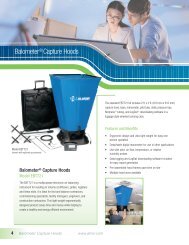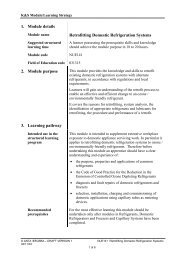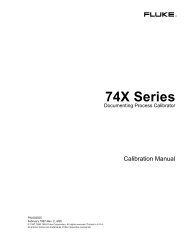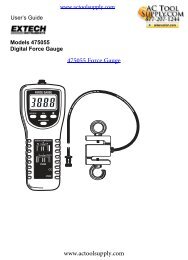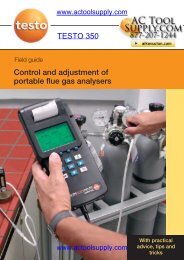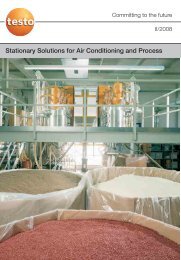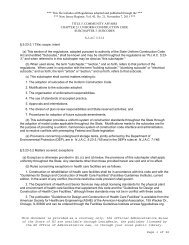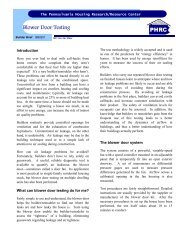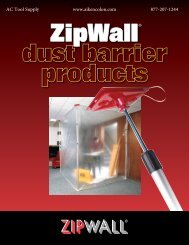Testo 350 Field Guide - Actoolsupply.com
Testo 350 Field Guide - Actoolsupply.com
Testo 350 Field Guide - Actoolsupply.com
You also want an ePaper? Increase the reach of your titles
YUMPU automatically turns print PDFs into web optimized ePapers that Google loves.
www.actoolsupply.<strong>com</strong><br />
• Non-Attainment Area = 25 tons per year (t/y)<br />
• Severe Non-Attainment Area = 10 tons per year (t/y)<br />
As such, a facility must look at ALL of their air pollution sources, <strong>com</strong>bine the total<br />
and if it exceeds the limits stated above, they are NOW considered a large<br />
source. With this large source designation <strong>com</strong>es extensive data gathering and<br />
reporting and it also triggers other federal and state regulations.<br />
Once designated as a Title V facility, each source must propose what methods it<br />
will do to control and monitor emissions. The acceptance of each proposal<br />
depends upon the local and/or state requirements. The sources have a variety of<br />
ways to monitor their emissions. They may use f-factors and fuel calculation; to<br />
temperature or other parametric monitoring; to measuring flue gas with either<br />
portable analyzers, stack testing trailers, or CEMS. The authorities wish is to<br />
have real flue gas measurements and portable analyzers provide a very good<br />
means to collect true, accurate and less costly data.<br />
Title V regulations, including the Compliance Assurance Monitoring (CAM) and<br />
Periodic Monitoring (PM) are the driving force in targeting these smaller sources.<br />
CAM and PM were developed to address all the sources not previously identified<br />
through the other programs.<br />
Fundamental Change in Compliance<br />
A fundamental regulatory change has recently taken place. Historically, sources<br />
only needed to be in <strong>com</strong>pliance during their stack test (generally tested once<br />
every 1 or 5 years). Now, sources are required to be in <strong>com</strong>pliance 100% of the<br />
time. The proof of <strong>com</strong>pliance is now the responsibility of the source and not the<br />
one-time emission (stack) test.<br />
A <strong>com</strong>pany officer is now legally responsible for his facility’s air quality<br />
<strong>com</strong>pliance. The regulatory enforcement agencies have the authority to issue<br />
civil fines and/or take criminal action if <strong>com</strong>pliance is not met. These two new<br />
concepts of continuous <strong>com</strong>pliance and enforcement authority provide the<br />
incentive to <strong>com</strong>ply with the regulations. This opens a whole new market for<br />
portable analyzers.<br />
Trends for Portable analyzers<br />
The step to testing smaller sources provided a good reason to utilize another analyzer<br />
technology, namely electrochemical sensors. They provide accurate data, are<br />
more cost effective, and are widely available. Portable electrochemical analyzers<br />
are now accepted at the federal, state, and local levels for monitoring emissions.<br />
43.2<br />
www.actoolsupply.<strong>com</strong>



